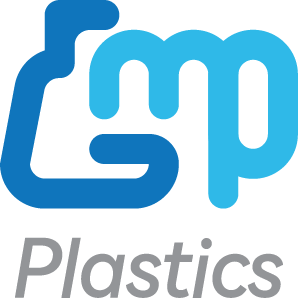Today, we’re diving into something cool, futuristic, and totally game-changing—3D cell culture! Imagine if scientists could grow mini-brains, print artificial livers, or even build entire organs in a lab. Sounds like science fiction, right? Nope—it’s real, it’s happening, and it’s the future of medicine, drug development, and biotechnology!
But before we blast off into the awesome world of 3D cell culture, let’s back up a second. What exactly is it? And why is it so much better than the old-school way of growing cells in a lab? Buckle up, because we’re about to find out! 🚀
What is 3D Cell Culture?
Okay, picture this: You're growing some cells in a petri dish. They're chilling on the bottom of a flat surface, spreading out like pancakes. That’s what we call 2D cell culture—cells growing in a single layer on plastic or glass.
But hold up—our bodies aren’t flat like a pancake! Cells inside us grow in three dimensions, surrounded by other cells, extracellular matrix (a fancy name for their environment), and all sorts of biochemical signals. So if scientists want to study cells in a way that actually mimics how they behave inside the human body, they need a new approach. Enter...
🎉 3D CELL CULTURE! 🎉
Instead of cells growing in a boring flat layer, they now grow in a three-dimensional environment, just like in real tissues. And that means way more accurate results when testing drugs, studying diseases, or even growing replacement body parts! 🧬
2D vs. 3D Cell Culture: What's the Big Deal? 🤷♂️
| Feature | 2D Cell Culture | 3D Cell Culture |
|---|---|---|
| Cell Growth | Flat, single layer (pancake mode) | Multilayered, tissue-like (realistic mode) |
| Cell Interactions | Limited communication | Natural communication, just like in real tissues! |
| Drug Testing Accuracy | Not very predictive | Mimics real human tissues, much better! |
| Best For | Basic research | Drug testing, disease modeling, and tissue engineering |
So yeah… 2D cell culture? Old-school. 3D cell culture? The future. 🚀
How Do Scientists Create 3D Cell Cultures? 🧫
Now that we know why 3D cell culture is awesome, let's talk about how it's done! Scientists have some pretty rad techniques to make this happen.
1. Scaffold-Based 3D Cell Culture 🏗️
- Imagine giving cells a tiny jungle gym to grow on!
- Scientists use materials like collagen, hydrogels, or synthetic polymers as scaffolds.
- Cells attach, spread, and form tissue-like structures—just like real organs!
✅ Cool Example: Scientists use this method to grow artificial skin, cartilage, and even blood vessels!
2. Scaffold-Free 3D Cell Culture 🔄
- No scaffolds here! Instead, cells self-organize into structures like spheroids (tiny balls of cells).
- This technique is great for growing mini tumors to study how cancer spreads and reacts to treatments.
✅ Cool Example: Scientists create tumor models in a dish to test new cancer drugs! 🎗️
3. Organoids: Tiny Organs in a Dish! 🧠💊
- These are miniature, functional versions of human organs grown from stem cells!
- Scientists have made mini-brains, livers, kidneys, and even beating heart tissue! 😲
✅ Cool Example: Brain organoids help researchers study Alzheimer’s, Parkinson’s, and autism! 🧠
4. Bioprinting & Organ-on-a-Chip 🖨️🩸
- 3D Bioprinting is like using a printer—but instead of ink, it prints live cells!
- Organ-on-a-chip simulates tiny versions of human organs with real blood flow.
✅ Cool Example: Scientists are working on 3D-printing entire human livers for transplants! 🤯
Why is 3D Cell Culture So Important? 🌍💡
3D cell culture isn’t just a cool science trick—it’s changing the world in some pretty mind-blowing ways! 🌎
1. Cancer Research & Drug Development 💊
- Scientists can grow realistic tumor models in 3D, making it easier to test new cancer drugs.
- No more relying on mice or flat petri dishes that don’t mimic human conditions.
2. Personalized Medicine 🧬
- What if doctors could test drugs on a mini version of your own organs before giving them to you?
- With 3D cell culture, they can! That means fewer side effects and better treatments tailored to you.
3. Tissue Engineering & Regenerative Medicine 🏥
- Scientists are growing artificial tissues and even full organs in the lab!
- In the future, we might not need organ transplants—we’ll just grow new ones!
4. Reducing Animal Testing 🐭🚫
- With 3D cell culture, scientists can test new drugs on human-like tissues instead of animals.
- More ethical, more accurate, and better for everyone! 🎉
Final Thoughts: 3D Cell Culture is Science at Its Best!
So, what have we learned today?
🔬 3D cell culture = growing cells in a way that mimics real human tissues.
💊 It’s revolutionizing drug testing, personalized medicine, and disease research.
🧠 Scientists are even growing tiny organs to study and treat diseases!
🚀 The future? Lab-grown organs, better treatments, and medical breakthroughs!




